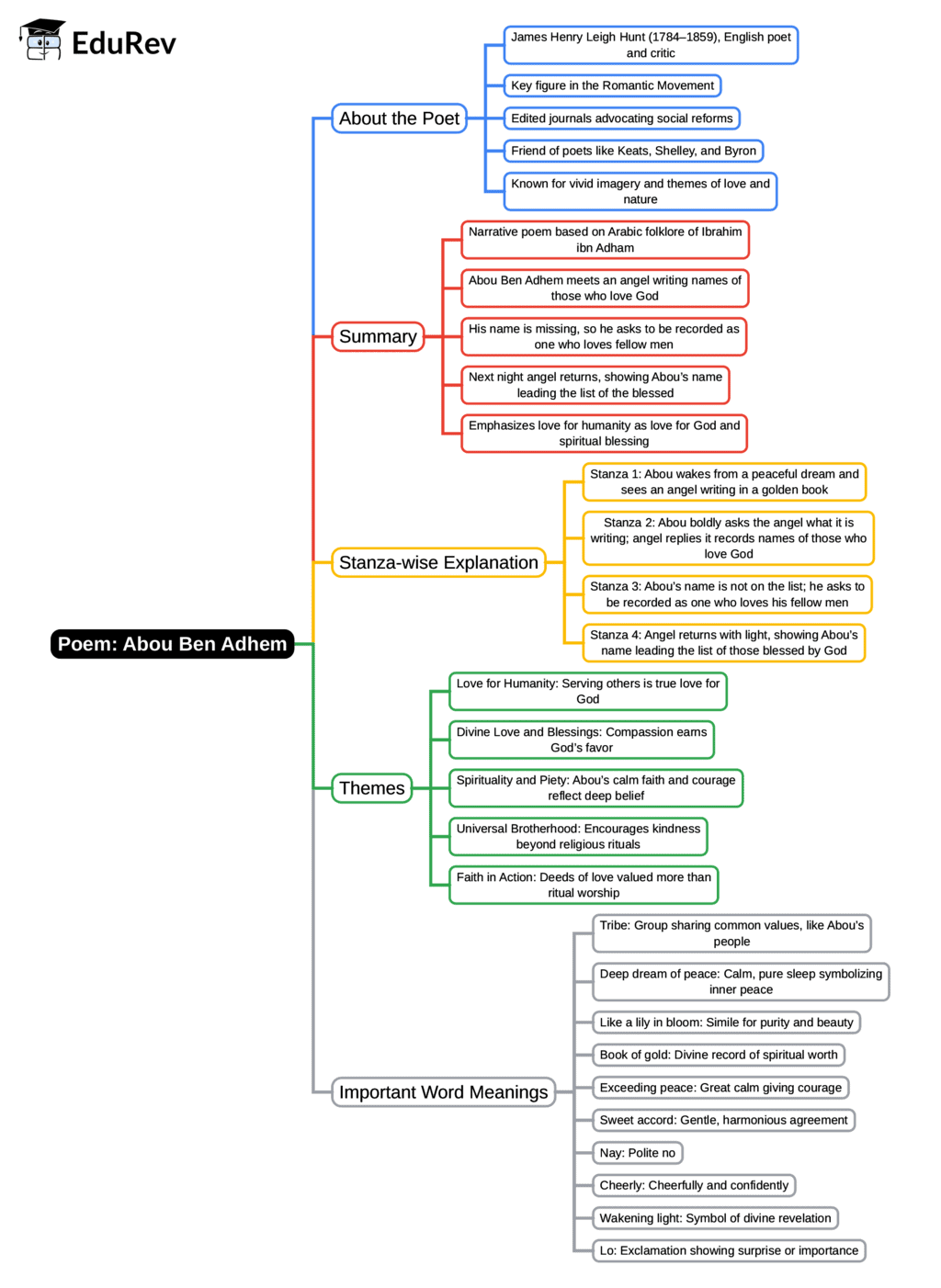Class 10 Exam > Class 10 Notes > English Class 10 ICSE > Mind Map: Abou Ben Adhem
Mind Map: Abou Ben Adhem | English Class 10 ICSE PDF Download

The document Mind Map: Abou Ben Adhem | English Class 10 ICSE is a part of the Class 10 Course English Class 10 ICSE.
All you need of Class 10 at this link: Class 10
|
80 videos|255 docs|60 tests
|
FAQs on Mind Map: Abou Ben Adhem - English Class 10 ICSE
| 1. What is the central theme of the poem "Abou Ben Adhem"? |  |
Ans. The central theme of "Abou Ben Adhem" is the idea of love for one's fellow human beings and the importance of being kind and benevolent. The poem illustrates how Abou Ben Adhem, a character who values love and compassion over religious formalities, is rewarded for his good deeds. It emphasizes that true devotion is expressed through love and acts of kindness towards others.
| 2. Who is Abou Ben Adhem and what is his significance in the poem? |  |
Ans. Abou Ben Adhem is the protagonist of the poem, depicted as a noble and kind-hearted man. His significance lies in his rejection of conventional religious practices in favor of a more humane approach to spirituality. When he encounters an angel recording the names of those who love God, he expresses that he loves his fellow men, which ultimately leads to his name being written in the book of life. This highlights the poem's message about the power of love and kindness.
| 3. How does the poem portray the relationship between love for God and love for humanity? |  |
Ans. The poem suggests that love for God is inherently linked to love for humanity. Abou Ben Adhem's declaration that he loves his fellow men is seen as a genuine expression of his devotion to God. The angel's response reinforces the idea that acts of kindness and compassion towards others are equally significant in the spiritual realm, indicating that love for humanity is a pathway to divine favor.
| 4. What literary devices are used in "Abou Ben Adhem"? |  |
Ans. The poem employs several literary devices, including imagery, personification, and repetition. Imagery is used to paint vivid pictures of the scenes described, while personification gives human qualities to the angel. Repetition is evident in the phrases that emphasize love and kindness, reinforcing the poem's central message. These devices work together to create an emotional and impactful narrative.
| 5. What message does the conclusion of the poem convey? |  |
Ans. The conclusion of the poem conveys a powerful message about the significance of love and kindness in one's life. It reveals that Abou Ben Adhem's selfless love for others leads to his ultimate recognition by the divine. This ending reinforces the idea that true spirituality is not measured by rituals but by the love and compassion one shows to fellow beings, encouraging readers to prioritize kindness in their own lives.
Related Searches















